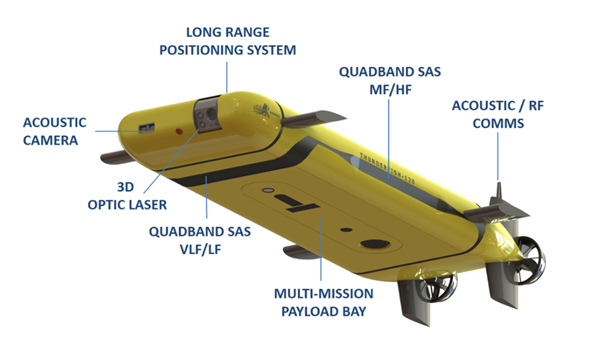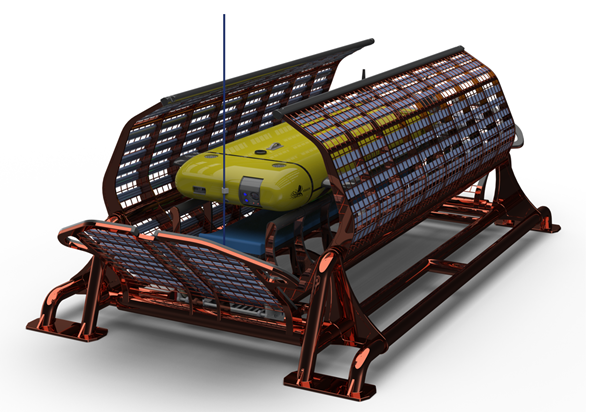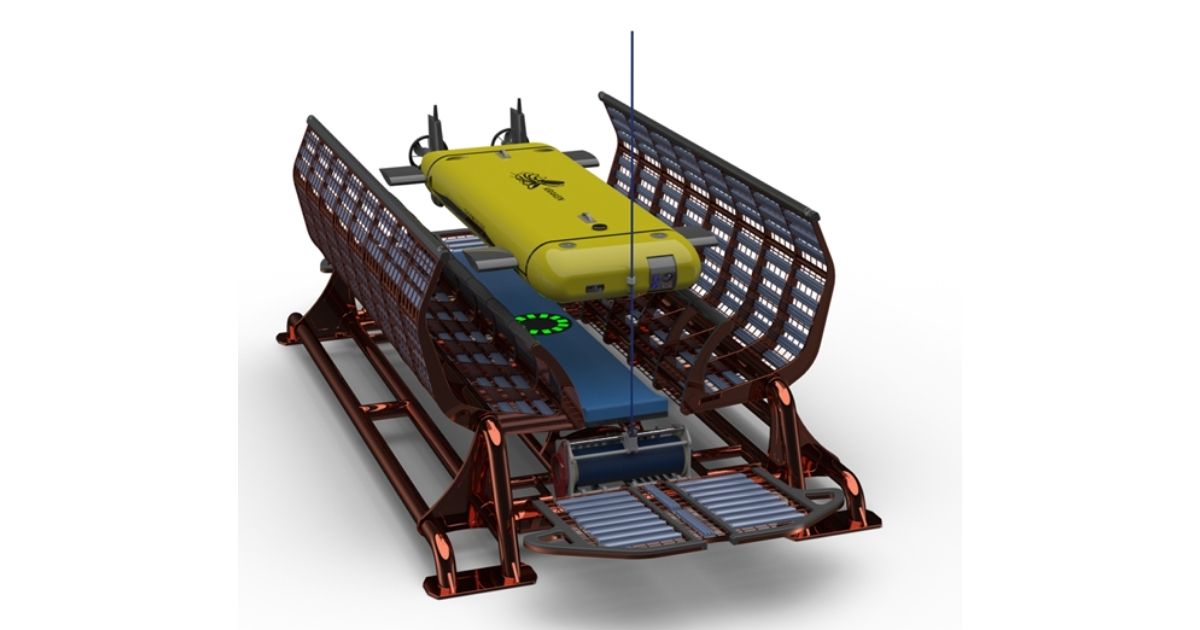Kraken Robotics Inc. (TSX-V: PNG, OTCQB: KRKNF), Canada’s Ocean Company, is pleased to announce that it will receive a $2,909,891 non-refundable financial contribution from the National Research Council of Canada’s Industrial Research Assistance Program (NRC-IRAP).
The funding will be received over a 26-month project period and will be used to support the development of Kraken’s seabed resident ThunderFish® XL Autonomous Underwater Vehicle (TFXL AUV).
 ThunderFish® XL Autonomous Underwater Vehicle
ThunderFish® XL Autonomous Underwater Vehicle
Building from the previous development efforts of the ThunderFish® Alpha AUV, the ThunderFish® XL AUV will be larger and with an increased depth rating, have a larger payload capacity and have longer mission endurance. Most importantly, the ThunderFish® XL will have key capabilities that are lacking with similar underwater vehicles in the industry today. These include: 1) the ability to transition from high-speed survey mode to “zero” speed hovering mode in-mission; 2) through-the sensor acoustic, laser and optical target detection, image recognition and inspection; and, 3) using onboard sensors to improve vehicle navigational accuracy.
ThunderFish® XL will be depth rated to 6,000 metres and carry an array of sensors and custom payload modules, including Kraken’s AquaPix® Synthetic Aperture Sonar, SeaVision® 3D laser profiler, SeaThrust® rim-driven thrusters and SeaPower® pressure tolerant batteries. All of these will be integrated with advanced artificial intelligence algorithms onboard the vehicle. In addition, the modular design will allow for rapid sensor reconfiguration and battery replacement. Finally, Kraken will develop a conceptual design for a robust and autonomous multi-modal docking solution allowing TFXL to function as a seabed resident AUV that can run a wide variety of missions from its underwater docking station.
 ThunderFish® XL in Subsea Docking Station
ThunderFish® XL in Subsea Docking Station
It should be noted that the ThunderFish® XL is significantly different from the more common “long endurance” AUVs that are prevalent today. Notable differences include:
- A much longer period of time in water;
- Period of deployment involves multiple missions;
- Vehicle may be completely shut down between missions;
- Typically utilizes a subsea docking structure for safety; and
- Typically involves charging and/or data download/communications while at dock.
Karl Kenny, Kraken’s President and CEO said, “The National Research Council of Canada Industrial Research Assistance Program (NRC-IRAP) has been an invaluable partner to Kraken for many years. We sincerely appreciate their commitment to help us further develop our ThunderFish® XL AUV. AUVs have evolved from an emerging, niche technology to a viable solution and an established part of underwater operations in both military and commercial applications. By combining our advanced sensor technologies with cutting edge artificial intelligence algorithms, it is our objective to deliver a cost-effective AUV solution that is truly autonomous as opposed to being simply automated. TFXL is a rectangle shaped, hovering AUV being developed for subsea resident applications. In the AUV space, Kraken is focused on using our in-house developed AUVs and procured AUVs to build a fleet of vehicles capable of providing Robotics as a Service rather than having a primary focus on selling AUVs. We expect that this will provide Kraken with a unique and valuable market position.”
By Kraken





